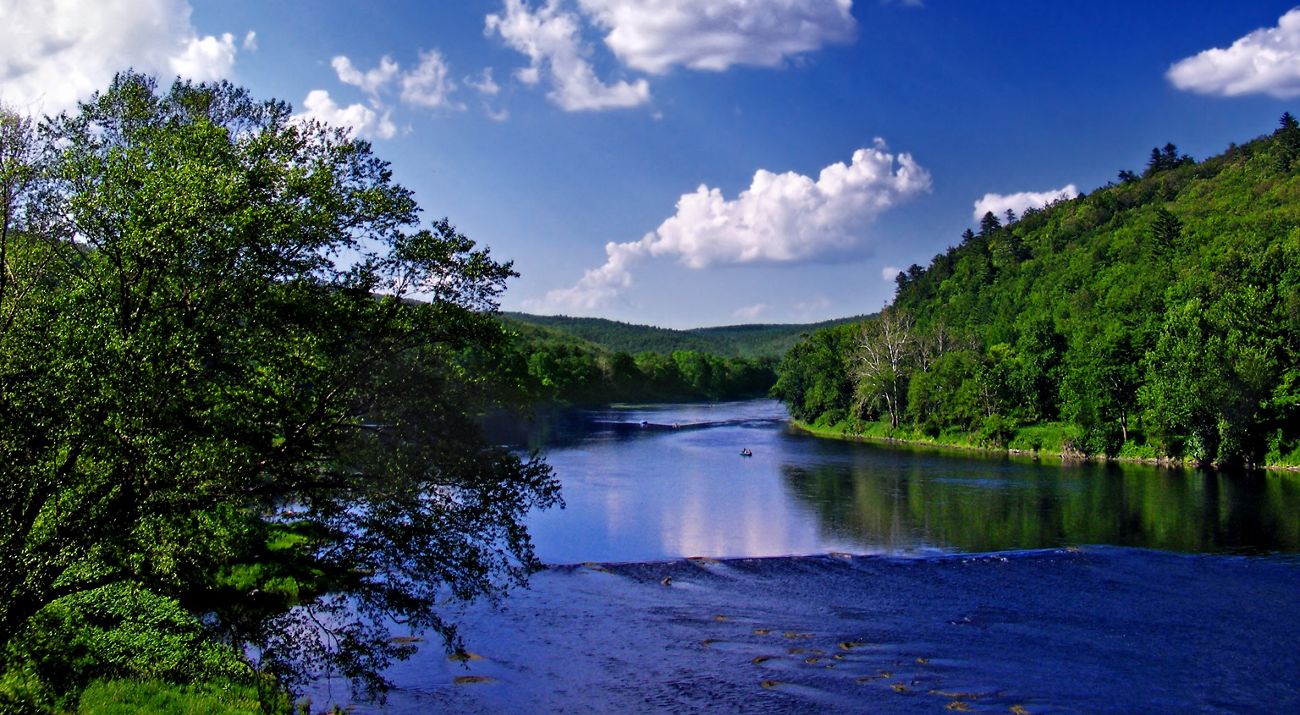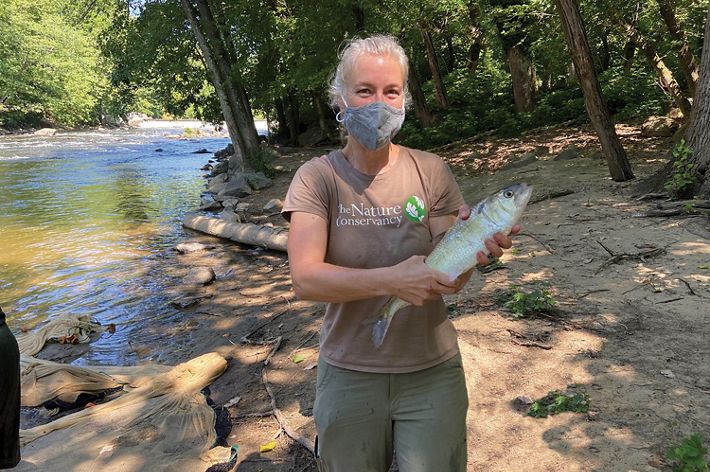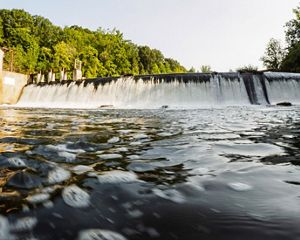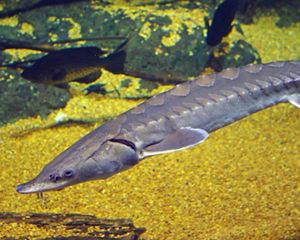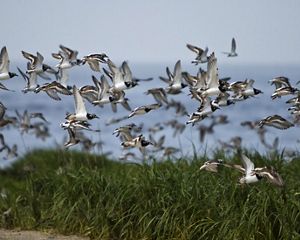Delaware River Basin
Protecting forests, floodplains and drinking water for 13 million people.
Flowing through New York’s Catskill mountains, Pennsylvania’s Poconos and the New Jersey Highlands, the Delaware River Basin provides high-quality drinking water to more than 13 million people across four states, including residents of New York City and Philadelphia.
Home to an incredible diversity of fish, wildlife and scenic vistas, the Delaware River Basin supports coastal communities with commercial fisheries and river towns with robust tourism revenue. Its floodplains reduce the impacts of flooding on homes and businesses downstream. Upriver, tributary streams are cold, clear and full of fish.
The Delaware River is renowned as the longest remaining un-dammed river east of the Mississippi. But these waters are not invincible—land conversion, stormwater pollution and climate change threaten their health.
The Nature Conservancy is working throughout the basin—in places like the City of Philadelphia and the Brandywine-Christina subwaterdshed that provides drinking water to 600,000 people in southeastern Pennsylvania and northern Delaware—to protect forests, floodplains and fish, while also working to make our cities more resilient.
Taking Action for the Delaware River Basin
Working with partners, TNC has identified lands that are important for maintaining clean water. In the headwaters of the Delaware River Basin, TNC is conserving forested lands, particularly those surrounding streams, lakes and rivers. In the Cherry Valley National Wildlife Refuge, along the Kittatinny Ridge and in the Poconos in Pennsylvania, our team of dedicated scientists and land protection professionals work with landowners, hunting and fishing clubs and state agencies to protect and connect high-quality forests and floodplains.
TNC is also advancing innovative restoration approaches that allow rivers to heal after centuries of development and degradation. Our river restoration projects showcase the benefits of reconnecting the Delaware River to its floodplain to help improve water quality, manage river flows and slow floodwaters, while restoring habitats that support healthy populations of fish and wildlife.
Improving Urban Infrastructure
TNC is also working to reduce the impacts of stormwater on urban communities. In Philadelphia, we're working with the city's Water Department to develop stormwater management solutions in two neighborhoods, transforming hard surfaces like pavement to absorb floodwaters and trap pollutants before reaching our streams and rivers.
In recent years, the Northeast U.S. has felt the effects of increased flooding, with the resulting property damage and amplified runoff pollution in our waterways. Add stormwater to the mix—considered by the EPA to be the fastest growing source of water pollution in the U.S—and the result is waterways in which people can neither swim nor fish. Our efforts to utilize nature-based solutions will help both people and nature thrive, together.
Quote: Julie Ulrich
Adding more nature—trees, plantings, green spaces—to the city environment delivers benefits that reach beyond pollution control.
Restoring Migratory Fish Populations
In the late 19th century, the Delaware River supported one of the largest American shad commercial fisheries on the East Coast. Shad, along with its smaller cousins alewife and blueback herring (or river herring), played a key role in the culture and economy of the region. History is filled with tales of the Delaware River’s epic spring shad runs. But over the course of a 100 years, the narrative shifted to a story of decline of what author John McPhee called America’s founding fish.
With the arrival of the Industrial Revolution, thousands of dams—large and small—were built along eastern rivers to power mills and factories. These manmade barriers cut off the path for migratory fish, preventing them from completing their annual life cycle of swimming from the open ocean to their natal river waters. At the same time, pollution from growing urban areas and overfishing also threatened the survival of these migratory fish.
Today, the shad and river herring swimming in the Delaware River represent just a small fraction of their former populations. But there is hope they might make a comeback, thanks in part, to efforts by TNC and other partners working in this river basin that drains an area of more than 14,000 square miles and spans five states.
Quote: Mari-Beth DeLucia

The roadmap that is produced from our research will set the stage for a healthy future for shad and river herring.
Creating Conditions to Stage a Comeback
A grant from the National Fish and Wildlife Foundation (NFWF) is charting a course to bring shad and other native migratory fish back to the Delaware River. The NFWF funding supports a two-year effort to prioritize restoration activities in areas that are key to the life cycles for these migratory fish, specifically spawning.
TNC's previous research laid out an overall plan for shad recovery. The NFWF project will identify key tributaries within the Delaware River basin where restoration holds the greatest potential for improving habitat and increasing the numbers of shad and river herring. TNC, together with The Academy of Natural Sciences of Drexel University and the Wildlands Conservancy, will complete the project in 2021. We will ultimately be able to measure long-term success by the number of shad and river herring that come back to the Delaware each year.
Delaware River Basin Restoration Roadmap
DownloadDelaware River Basin Restoration Roadmap
Published in 2022, the goal of the Restoration Roadmap is to increase the spawning runs of American Shad, Alewife and Blueback Herring within the Delaware basin by enhancing aquatic connectivity and habitat quality in priority tributaries.
The World's Forgotten Fishes
DownloadReport: The World's Forgotten Fishes
A 2021 report, The World’s Forgotten Fishes, published by World Wildlife Fund (WWF), TNC and 14 other conservation organizations details the critical roles that freshwater fish have to play in the health, food security and livelihoods of millions of people around the world.
Stay in Touch
Subscribe to Nature News, our monthly e-newsletter. Get the latest news and updates about our conservation efforts locally and around the world, delivered straight to your inbox.
